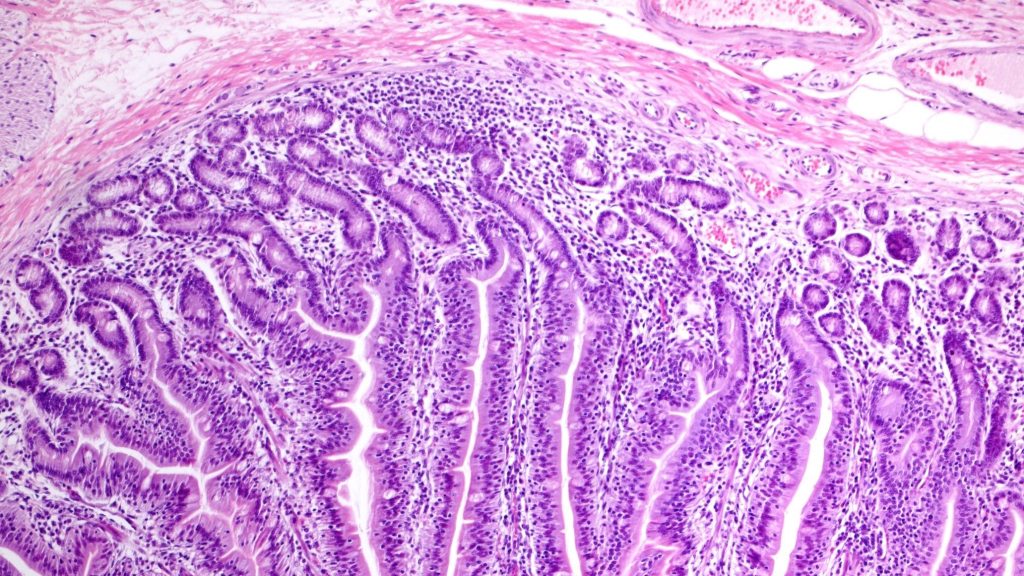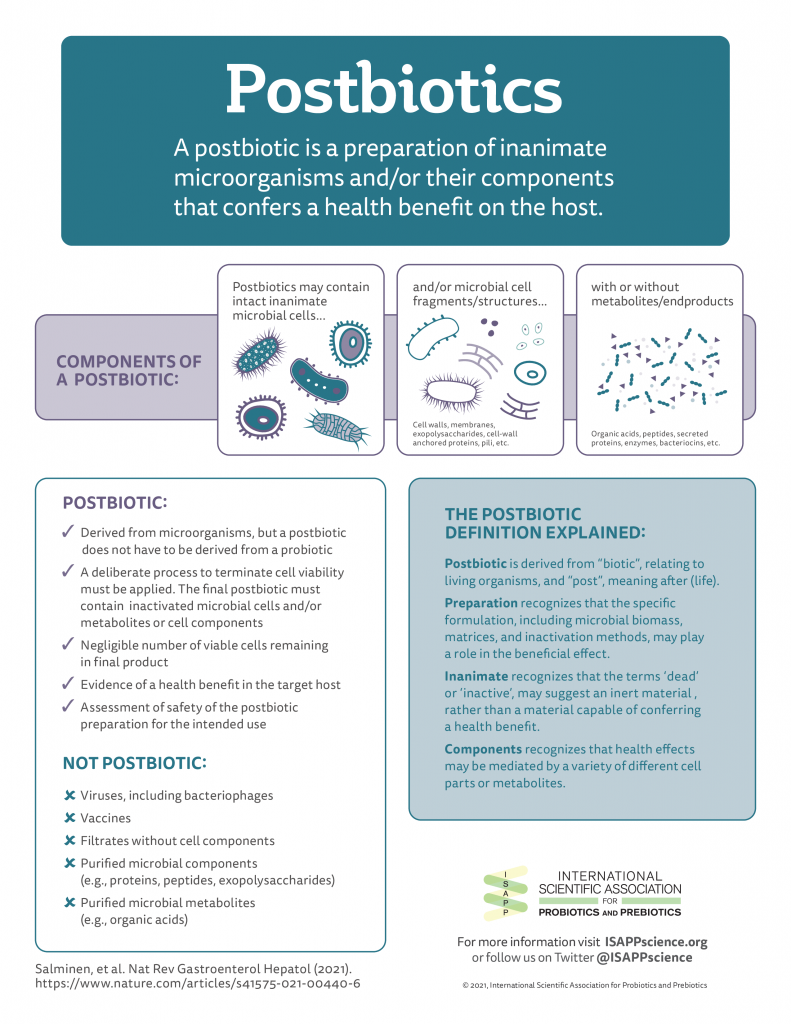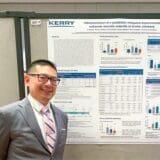As our understanding of the influence of the gut ecosystem on short and long-term health grows, modulation of the gut microbiota continues to be an increasingly important area of intervention. The benefits of regular consumption of functional foods containing probiotics and/or prebiotics are becoming more widely known. They include enhanced nutrient digestion and absorption, lower incidence of gastrointestinal disturbances and strengthened immunity. However, the science and our understanding of the microbiome continues to evolve and grow more complex. As a result, we are seeing more types of ‘-biotics’ products, like prebiotics and probiotics, intended to support the microbiome. Postbiotics are one type of product that is seeing growth. What are postbiotics, and how do they differ from other ‘-biotics’?
What is a postbiotic?
A postbiotic is defined as a “preparation of inanimate microorganisms and/or their components that confers a health benefit on the host” by The International Scientific Association of Probiotics and Prebiotics (ISAPP) consensus statement on the definition and scope of postbiotics.
This definition was agreed upon by a panel of experts specializing in nutrition, microbial physiology, gastroenterology, paediatrics, food science and microbiology by reviewing existing science, regulations, and commercial use of postbiotics.

What is the difference between probiotics and postbiotics?
The primary difference is that the phrase probiotics refers to live microorganisms, while postbiotics refers to inanimate (inactivated or dead cells) microorganisms or their components. As we learn more about how probiotics work, science has shown that some microorganisms don’t need to be alive to confer a benefit. There might be parts of a microorganism’s cell that interacts with our body (e.g. our immune system), and this part of the cell might be present whether that cell is alive or dead.
The consensus statement from ISAPP proposed that postbiotics may work by interacting with our resident microbiota, modulate immune responses, or interact with our nervous system. It is critical that the microorganism has produced enough of the bioactive molecules that cause these benefits before it is inactivated.
Postbiotics do not need to be alive to confer a benefit, so they are considered stable during industrial processing and storage.
ISAPP has created the infographic below to help clarify the definition of a postbiotic. For more science-based resources on digestive health and the microbiome, you can visit the ISAPP website.
Reaping the benefits of postbiotics in food for humans or animals
-
- Postbiotics are inanimate in nature, offering significant advantages for their application in food and feed matrices subject to varying processing conditions, as well as an inherent lower susceptibility to storage conditions
- Scientific evidence behind postbiotics highlights their ability to increase the host resilience from within by influencing gut function, its microbiota, and the interconnection with the central-nervous system (gut-brain axis)
- This is an up and coming technology in the ‘biotic’ space with multiple uses in food and feed applications, which will advance significantly in coming years as our scientific knowledge expands into dedicated life-stages and/or need-states
Benefits of postbiotics – where science is today

The research concerning the potential benefits of postbiotics has been focused on gut health, with Lactobacillus-derived postbiotics taking the spotlight. Postbiotics may act by cellular and molecular mechanisms involving the control of the immune and nervous systems, as suggested by their ability to boost innate immunity, reduce pathogen-induced inflammation and promote the survival of intestinal epithelial cells (Cicenia et al., 2014). Inactivated Lactobacilli preparations have been capable of reducing pain scores, bloating, and stool frequency in irritable bowel syndrome (IBS) patients (Tarrerias et al., 2011). Similarly, heat-killed L. acidophilus reduced bowel movements in patients with chronic diarrhoea, even in comparison with the live L. acidophilus-treated group (Xiao et al., 2003), which suggest a significant advantage over any concerns of viability and delivery of a live microbe to the required site of action.
Postbiotics may also play a role in early life interventions. Healthy toddlers receiving an inactivated L. paracasei fermented cow’s milk preparation showed improved measures of immunity including reduced incidence of common infectious diseases and significant changes in innate and acquired immune biomarkers, such as secretory IgA and defensins (Corsello et al., 2017). Furthermore, heat-killed L. acidophillus LB plus its culture medium reduced the recovery time of infants with non-rotaviral diarrhoea by 1 day (Liévin-Le Moal et al., 2007). Thus, postbiotics may represent a feasible intervention to mitigate the incidence and severity of common ailments in children.
How do postbiotics work – are short-chain fatty acids the key?
Provision of postbiotics from L. gasseri through traditional fermented milk beverages also improved stool consistency in healthy individuals with tendency for constipation, with an increase in short-chain fatty acid (SCFA) production (Sawada et al., 2016). SCFA may play a key role in the functionality of postbiotics, either directly as actives in the postbiotic formulation, or indirectly as metabolites resulting from induced changes in gut microbiota. SCFA are known to stimulate colonic sodium and fluid absorption, with butyrate showing positive benefits on helping colonocytes grow and repair, enhancing gut barrier function, and mucosal immunity. Due to the interconnectivity between our gut, brain, and microbiota, postbiotics have also been demonstrated to positively influence measures of anxiety and quality of sleep, as well as enhancing the mood state, of healthy adults (Murata et al., 2018; Nishida et al., 2019).
Postbiotics may also play a role in early life interventions. Healthy toddlers receiving an inactivated L. paracasei fermented cow’s milk preparation showed improved measures of immunity including reduced incidence of common infectious diseases and significant changes in innate and acquired immune biomarkers, such as secretory IgA and defensins (Corsello et al., 2017). Furthermore, heat-killed L. acidophillus LB plus its culture medium reduced the recovery time of infants with non-rotaviral diarrhoea by 1 day (Liévin-Le Moal et al., 2007). Thus, postbiotics may represent a feasible intervention to mitigate the incidence and severity of common ailments in children.
Postbiotics in animal health – a role for improving quality of our food supply
Sustainability and food safety are at the core of our success as a civilization in the centuries to come. With these aspirations, a robust food supply chain is paramount, and, thus, we need to look beyond our own health to that the animals that constitute/produce our food.

Inactivated Saccharomyces cerevisiae has been shown to reduce Salmonella Enteriditis in commercial laying hens (Gingerich et al., 2021). This pathogen is responsible for the vast majority of foodborne salmonellosis, and, as such, postbiotics could play a role in reducing foodborne illness by targeting the farming stage of food production.
A Lactic Acid Bacterium derived postbiotic has also shown potential to diminish the severity of gut lesions caused by necrotic enteritis, increasing the liveability and productivity of broilers (Duong et al., 2021). Postbiotics from L. acidophilus have also been shown to accelerate the development and establishment of microbiome clusters in nursery pigs, which correlated with increases in growth rates (Khafipour et al., 2021). Overall, there is evidence suggesting that postbiotics can facilitate the production of animals in an effective, safe and sustainable manner.
Looking to the future
The evidence behind the functionality of postbiotics is increasing rapidly. Nonetheless, in the rather populated functional biotics area, the scientific community is proposing that postbiotics should be characterized by defining the microorganisms in the starting material, identifying the inactivation procedure, and the description and quantification of the final postbiotic composition. Although this practice has not been fully entrenched yet, much of this information should be at the ready and will only make the case for the use of postbiotics in food and feed applications stronger.
Contributors:
-
References
Cicenia, A., Scirocco, A., Carabotti, M., Pallotta, L., Marignani, M., & Severi, C. (2014). Postbiotic activities of lactobacilli-derived factors. J Clin Gastroenterol, 48 Suppl 1, S18-22. https://doi.org/10.1097/mcg.0000000000000231
Corsello, G., Carta, M., Marinello, R., Picca, M., De Marco, G., Micillo, M., Ferrara, D., Vigneri, P., Cecere, G., Ferri, P., Roggero, P., Bedogni, G., Mosca, F., Paparo, L., Nocerino, R., & Berni Canani, R. (2017). Preventive Effect of Cow’s Milk Fermented with Lactobacillus paracasei CBA L74 on Common Infectious Diseases in Children: A Multicenter Randomized Controlled Trial. Nutrients, 9(7), 669. https://doi.org/10.3390/nu9070669
Duong, T. Llamas Moya, S., Rasmussen, C., Lumpkins, B, & Mathis, G.F. (2021). Evaluation of a postbiotic as an intervention for mitigating necrotic enteritis in experimentally infected broilers. Poultry Science Association Annual Meeting.
Gingerich, E., Frana, T., Logue, C. M., Smith, D. P., Pavlidis, H. O., & Chaney, W. E. (2021). Effect of Feeding a Postbiotic Derived from Saccharomyces cerevisiae Fermentation as a Preharvest Food Safety Hurdle for Reducing Salmonella Enteritidis in the Ceca of Layer Pullets. J Food Prot, 84(2), 275-280. https://doi.org/10.4315/jfp-20-330
Khafipour, E., Chakrabarti, A., Sardi, M., Kozlowicz, B., Petry, D.B., Koontanatechanon, A., Parnsen, W., & Srichana, P. (2021). A postbiotic from Lactobacillus Acidophilus fermentation (LAF) accelerates progresoin of compositional and functional gut microbiome clusters and promotes body weight in nursery pigs. J Anim Sci, 99:209-210 https://doi.org/10.1093/jas/skab235.380
Liévin-Le Moal, V., Sarrazin-Davila, L. E., & Servin, A. L. (2007). An experimental study and a randomized, double-blind, placebo-controlled clinical trial to evaluate the antisecretory activity of Lactobacillus acidophilus strain LB against nonrotavirus diarrhea. Pediatrics, 120(4), e795-803. https://doi.org/10.1542/peds.2006-2930
Murata, M., Kondo, J., Iwabuchi, N., Takahashi, S., Yamauchi, K., Abe, F., & Miura, K. (2018). Effects of paraprobiotic Lactobacillus paracasei MCC1849 supplementation on symptoms of the common cold and mood states in healthy adults. Benef Microbes, 9(6), 855-864. https://doi.org/10.3920/bm2017.0197
Nishida, K., Sawada, D., Kuwano, Y., Tanaka, H., & Rokutan, K. (2019). Health Benefits of Lactobacillus gasseri CP2305 Tablets in Young Adults Exposed to Chronic Stress: A Randomized, Double-Blind, Placebo-Controlled Study. Nutrients, 11(8). https://doi.org/10.3390/nu11081859
Salminen, S., Collado, M. C., Endo, A., Hill, C., Lebeer, S., Quigley, E. M. M., Sanders, M. E., Shamir, R., Swann, J. R., Szajewska, H., & Vinderola, G. (2021). The International Scientific Association of Probiotics and Prebiotics (ISAPP) consensus statement on the definition and scope of postbiotics. Nat Rev Gastroenterol Hepatol. https://doi.org/10.1038/s41575-021-00440-6
Sawada, D., Sugawara, T., Ishida, Y., Aihara, K., Aoki, Y., Takehara, I., Takano, K., & Fujiwara, S. (2016). Effect of continuous ingestion of a beverage prepared with Lactobacillus gasseri CP2305 inactivated by heat treatment on the regulation of intestinal function. Food Research International, 79, 33-39. https://doi.org/https://doi.org/10.1016/j.foodres.2015.11.032
Tarrerias, A. L., Costil, V., Vicari, F., Létard, J. C., Adenis-Lamarre, P., Aisène, A., Batistelli, D., Bonnaud, G., Carpentier, S., Dalbiès, P., Ecuer, S., Etienne, J., Fantoli, M., Grunberg, B., Lannoy, P., Lapuelle, J., Margulies, A., Neumeier, M., Rouillon, J. M., Schmets, L., Pingannaud, M. P., Coulom, P., Kholer, F., & Canard, J. M. (2011). The effect of inactivated Lactobacillus LB fermented culture medium on symptom severity: observational investigation in 297 patients with diarrhea-predominant irritable bowel syndrome. Dig Dis, 29(6), 588-591. https://doi.org/10.1159/000332987
Xiao, S. D., Zhang, D. Z., Lu, H., Jiang, S. H., Liu, H. Y., Wang, G. S., Xu, G. M., Zhang, Z. B., Lin, G. J., & Wang, G. L. (2003). Multicenter, randomized, controlled trial of heat-killed Lactobacillus acidophilus LB in patients with chronic diarrhea. Adv Ther, 20(5), 253-260. https://doi.org/10.1007/bf02849854


 Tri Duong holds a B.S. in biochemistry and molecular biology from Penn State University and a Ph.D. in functional genomics from North Carolina State University and completed postdoctoral training at Washington State University. He is a recipient of the Hy-line International Research award from the Poultry Science Association; holds 5 US patents; has published over 30 peer-reviewed research articles; and was a keynote presenter at the 30th Conference of the Indian Poultry Science Association.
Tri Duong holds a B.S. in biochemistry and molecular biology from Penn State University and a Ph.D. in functional genomics from North Carolina State University and completed postdoctoral training at Washington State University. He is a recipient of the Hy-line International Research award from the Poultry Science Association; holds 5 US patents; has published over 30 peer-reviewed research articles; and was a keynote presenter at the 30th Conference of the Indian Poultry Science Association.  Sara Llamas Moya, MSc, PhD is the Global Scientific Affairs & Applications Manager for Kerry Animal Performance Solutions. She is responsible for conducting clinical efficacy trials in target animal species and creating a scientific understanding of the mode of action of ingredients and technologies, from a nutrition and health perspective.
Sara Llamas Moya, MSc, PhD is the Global Scientific Affairs & Applications Manager for Kerry Animal Performance Solutions. She is responsible for conducting clinical efficacy trials in target animal species and creating a scientific understanding of the mode of action of ingredients and technologies, from a nutrition and health perspective. 